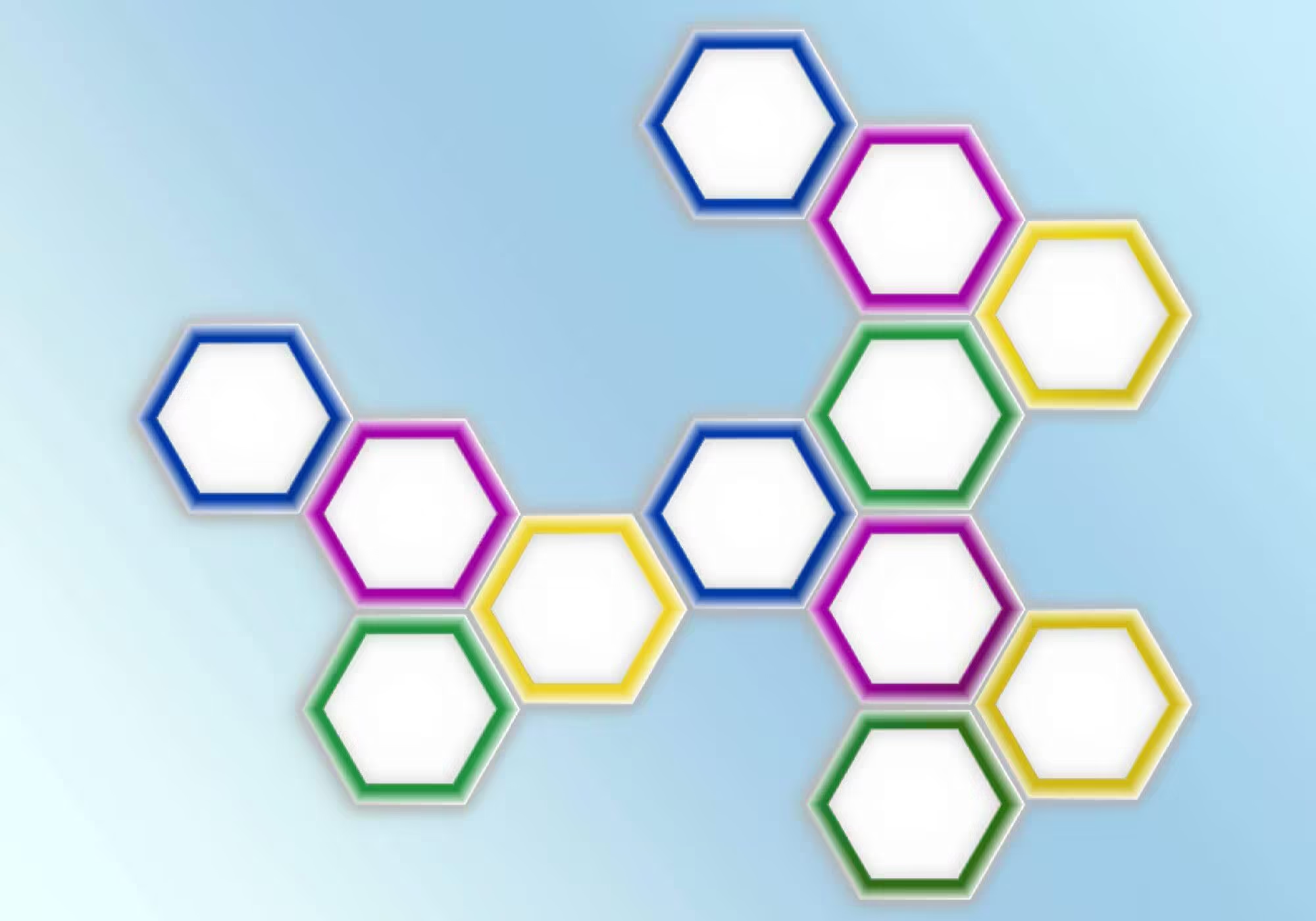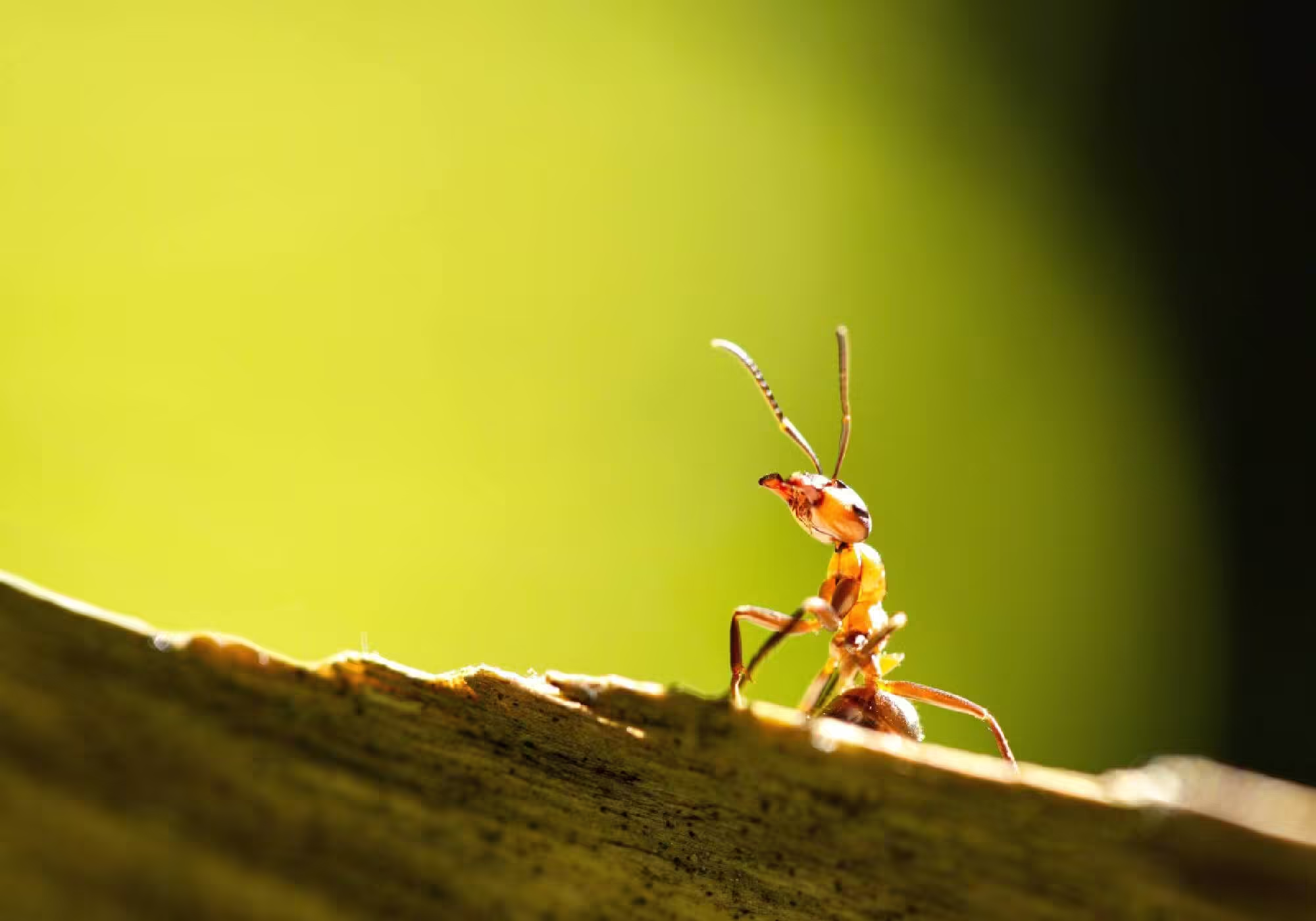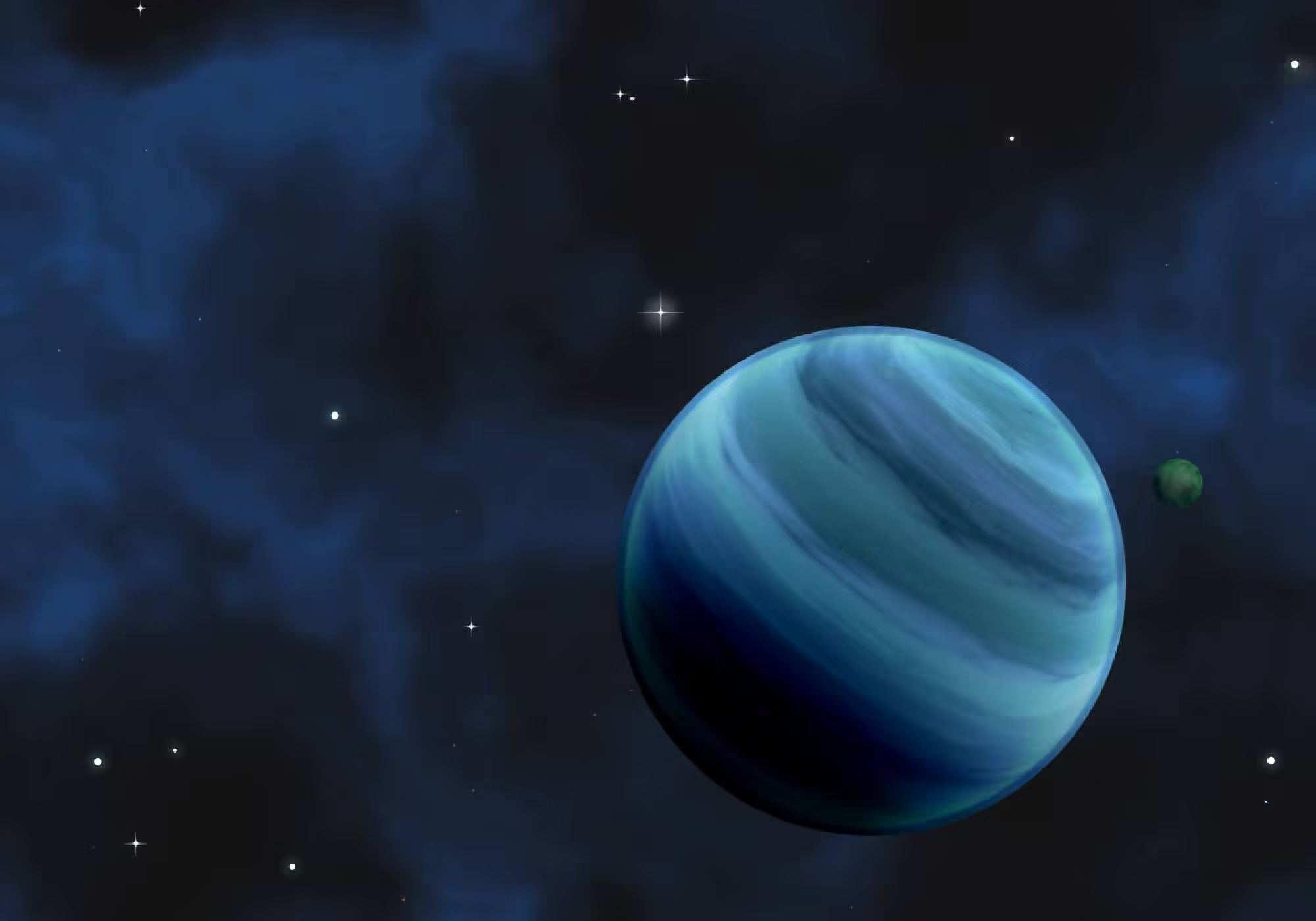Aromatic compounds are a big part of daily life. You’ll find them in perfumes, dyes, and medicines. But what makes them so special? These compounds have a unique structure that makes them incredibly stable. Their stability helps them last a long time and makes them useful in many industries. Let’s find out how their structure gives them this special power. Aromatic compounds are organic molecules that have a ring-like structure. The most common example is benzene. In benzene, six carbon atoms form a ring with alternating single and double bonds. This ring-like arrangement allows electrons to move freely, giving the compound remarkable strength. The free movement of electrons prevents the molecule from breaking apart easily. Structure of Aromatic Rings This is because the ring structure is what makes aromatic compounds strong. All the carbon atoms share these electrons in the ring. No carbon atom can have a lone electron within the ring. Thus, for example, benzene is a hexagonal shape with 6 carbon atoms each bonded to one hydrogen atom. The electrons move around the ring so that it does not break apart and is very stable. Stability of aromatic compounds These compounds are stable because of their structure. The electrons are evenly distributed in the region, and this also makes it balanced. It is this balance that prevents the ring from deformation and fracturing under difficult operating conditions. Many molecules become unstable during reactions, yet aromatic molecules are inert to these changes. They keep their shape when other atoms try to react with them. Compound Aromatic? Stability Benzene Yes Very Stable Naphthalene Yes Highly Stable Cyclobutadiene No Unstable Common Reactions of Aromatic Compounds Aromatic compounds are not very reactive toward chemicals. But when they do, it is always through a type of reaction known as a substitution or substitution reaction. This reaction replaces one atom in the ring with another. Despite the swap, the ring remains quite strong. Three common substitution reactions for aromatic compounds include: Both reactions preserve the aromaticity of the ring through maintaining the conjugate system. This is why aromatic compounds are useful for producing a variety of chemical products that need specific stability. Why Stability Matters in Reactions The stability of aromatic compounds implies that aromatic compounds do not undergo degradation, particularly during most reactions. They are less reactive than other molecules, thus minimizing the possible modifications. Nonetheless, in a substitution reaction, their stability aids them in reacting without the destruction of the ring system. This makes them suitable for creating even more complex composites at the same time. Businesses rely on this property to make sure that their products stay effective for as long as possible. Aromatic compounds are widely found in the environment all over the world. They are in the perfumes we use to keep us smelling fresh. These compounds are also in our fragrance. The dyes in clothes and the ink in pens also need these compounds to keep their color. This also justifies the practice of simple medicines, which use aromatic compounds to preserve their potency and efficacy over time. Without it, many products would deteriorate so quickly that they would not be useful at all. Conclusion Aromatic compounds are crucial in chemistry and our daily lives. Anyone involved with chemicals or chemical substances must recognize their importance and role. Their crystalline structure, as well as high chemical resistance, enables valuable applications in designing products with extremely high durability. It doesn’t matter if it’s a perfume you spray on your body. It is a dye used to color your hair or a medicine. These compounds guarantee that whatever you apply remains effective.
James Webb: Unveiling the Universe with Advanced Infrared Technology
The James Webb Space Telescope (JWST) has given people a view of space that has never been seen before. The JWST has highly advanced infrared technology. It offers a stunning picture of galaxies, stars, and even planets beyond our imagination. But how does it work? But what role makes it so unique in the space travel industry? The answer is in the infrared. Where visible light telescopes can not see through dust and halo objects, James Webb can. It sheds light on the mysteries of the universe that were very hidden. This makes James Webb different from predecessors like the Hubble Space Telescope, which has a remarkable unique ability. Whenever we try to look far into space, we realize that we are also looking back in time. The Strength of Infrared Technology in Space JWST’s ability to deliver these capabilities lies in infrared technology. We are unable to see infrared light with our eyes. Nonetheless, it remains a very important tool for observing hot objects. The stars, planets, and galaxies we point our telescopes at emit more infrared light than visible light. This is especially true if they are very far away or shrouded in dust. JWST’s infrared vision enables us to see things that were essentially hidden from other telescopes. For instance, it can go through the layer of gas and dust where stars usually form. This feature allows celestial cartographers to watch how stars form more easily. They can even track stars in distant galaxies. Key Discoveries from the James Webb Space Telescope Since its launch, the James Webb Telescope has astonished scientists with its discoveries. Here are some of the highlights: These are just the tip of the iceberg in terms of possibilities. Many unknowns will be revealed as the James Webb Space Telescope looks deeper into space. Why Is Infrared So Crucial for These Discoveries? JWST has a tremendous feature. It can study objects from the early days of the universe’s existence. This ability is possible with the help of this telescope. The light of objects moving away from us gets spread out in the spectrum. This phenomenon is called Redshift. We use Cepheid variables to find such objects. The smaller the distance between two objects, the greater the amount of Redshift seen from the object. This means that to study the first galaxies, we need a telescope like Webb. Webb is specially designed to detect infrared radiation. This is why, by capturing this redshifted light, James Webb allows us to watch objects. These objects are from more than 13 billion years ago. We can see ancient objects. It has opened a way to create the galaxies formed shortly after the Big Bang. The Journey to Launch James Webb Space Telescope The construction of the James Webb Space Telescope was a huge project. After the project began in 1996, it underwent design, engineering, and testing for over two decades. This occurred before the telescope’s launch in December 2021. Still, it has been a great success today. The project faced many setbacks on film. These included delays of more than a decade, constantly fluctuating budgets, and many technical glitches. This telescope is about a million miles from our planet. It is in a part of space called the second Lagrange point, or L2. From this position, it offers an unobstructed view of deep space. It can stay cool enough to work properly with infrared light. What Will James Webb Show Us Next? But there is more to this telescope, as we have already seen, that it is a discovery tool. Scientists hope that JWST will manage to see the atmospheres of planets. If we manage to capture some gases like oxygen or methane, it can only mean that there is life there. Apart from this, the telescope will also continue to give better pictures of the galaxy, stars and planetary systems. Nonetheless, when more data is accumulated, the scope of our understanding about the universe will skyrocket. The True Legacy of James Webb Space Telescope The James Webb Space Telescope is a scientific instrument, but it also reflects on the universe and its creation. With each photo, we learn a little more about our roots and the universe. Its infrared technology have made once unimaginable regions of space accessible. They have also allowed us to watch processes that have taken billions of years to unfold. Each time, James Webb informs us that there is still much unknown in the universe. How amazing the universe and all its mysteries are, and the James Webb Space Telescope is answering this call. References
How Tree Diversity Controls Red Imported Fire Ants
Red imported fire ants pose a significant threat to agriculture and wildlife. They invade and damage farms and crops and harm wildlife. These ants have spread rapidly in many areas, and they are very difficult to control. Yet, there is a natural solution, and that is tree diversity. Instead, we would plant different tree species, so the landscape itself is difficult for these ants. Red imported fire ants came from South America. They came to other countries in ships and cargo. Now, they are spreading rapidly. These ants are aggressive and can sting people or animals. They can deliver stings that can be painful and cause allergies. They also damage crops, bite livestock, and disturb local wildlife. The nests can also damage electrical equipment and farm machinery. You want to manage it effectively. How can we do this without those harmful chemicals? Reducing their impact is a natural and effective way provided by the diversity of trees. How Tree Diversity Helps Control Red Imported Fire Ants The reality is that tree diversity really does matter. When you have a variety of trees, you have a healthier environment. Other animals and insects feed on this variety. They compete with or prey on red imported fire ants for food. The food also competes with the ants. This reduces the population of ants; these are natural predators, potential competitors. Also, different tree species make it more difficult for the ants to form a stable colony. Every tree type has its own soil requirements, leaf litter, and shade patterns. There are certain types of soil and shade that the ants prefer to build their nests in. A mix of tree species keeps ground conditions always changing. This variety is also a natural barrier for red imported fire ants. It makes it harder for them to spread. Among other things, diverse trees increase competition for food. Fire ants are a species that needs a lot of food to create a colony. They are weaker at protecting their nests. Mostly they eat dead insects, seeds, and other organic matter. Ants do not grow so fast. It is difficult for them to find food among the variety of plants and animals. Ecological Benefits of Tree Diversity Fire ants are just one of thousands of factors that trees help control. It also makes the entire ecosystem healthier. Animals and plants are found in different trees. This helps native species like birds, insects, and other mammals to grow. They prey on red imported fire ants. It also increases the number and diversity of predators, including insects, birds, and rodents. For example, birds living in rich tree areas eat ants. This reduces the number of fire ants without the need for pesticides. And few trees improve soil quality, so it’s not as good for the ants to nest. On the other hand, single-species forests are vulnerable. They can spread rapidly in these environments, and they are red imported fire ants. Without diversity in plant and animal species, there aren’t as many natural predators, and the ants thrive. So, tree diversity is very important for balance. Success Stories In many areas, tree diversity has been a powerful tool for controlling imported fire ants. In the United States, forests with many types of trees had fewer fire ant colonies. This is compared to forests with only one type of tree. In mixed-species environments, ants have problems finding places to build nests. In fact, another study in Brazil had similar results. Areas with diverse forests had lower populations of red imported fire ants. More natural predators were available. There was also a greater likelihood of smaller colonies. These factors were enough to prevent the ants from turning into larger colonies. Tree diversity can be very effective in keeping invasive species under control. Practical Tips for Planting Diverse Trees to Control Red Imported Fire Ants But to use a diversity of trees to control fire ants, you have to figure out which trees to plant. Native trees are often the best. Predators of the fire ants live there. Local people are attracted to them because they attract local wildlife. They also support the natural food chain. Here are some tree species that are useful: As with planting for variety, spread the trees out a bit like people locations. The best thing to do is mix different species together. This is so the ants have to cross more obstacles and compete with other ants. Additionally, try to plant in places where red imported fire ants are most active. This helps prevent their spread. A Natural Solution for an Invasive Problem In our area, red imported fire ants are a dangerous and growing threat. Tree diversity offers a simple, natural solution. Planting a variety of species does two important things. It will attract natural predators. It creates barriers and reduces competition for food. Furthermore, it helps deal with imported fire ants without the use of harmful chemicals. It is beneficial not only for the season but for the entire ecosystem. In the long run, increased tree diversity makes the ecosystem more resilient to pests in general. Once we show tree diversity, we understand that nature has its own way of creating balance. So it works, and it’s an ecological solution we should adopt.
Exoplanet Habitability Index: Unlocking Clues to New Earths
Imagine finding a planet that feels like home with blue skies, fresh air, and maybe even signs of life. The idea once seemed like pure science fiction. We are now closer than ever to turning this dream into reality. Thanks to the Exoplanet Habitability Index (EHI), scientists have a tool. This tool helps us find planets with the potential to support life. It’s a pretty exciting time for space exploration, especially with new missions. The dream of finding a second Earth may not be as far-fetched as it seems. Search for Earth’s Twin It is difficult to believe. Over the past decade, we have discovered thousands of planets other than our solar system. These exoplanets come in all shapes and sizes; some are gas giants like Jupiter, while others are rocky like Earth. But here is the thing: not every exoplanet is a suitable candidate for life. Some are too hot. Some are too cold. A few planets lack an atmosphere, leaving life exposed to dangerous radiation. Without protection, harmful rays can reach the surface, making survival difficult. That’s where the Exoplanet Habitability Index comes in. It helps researchers figure out which planets actually have the right conditions to support life. What Is the Exoplanet Habitability Index? Simply put, the Exoplanet Habitability Index is like a rating system for planets. It gives scientists a way to rank how similar a planet is to Earth based on certain criteria. These criteria include the planet’s distance from its star. Another important aspect is the availability of liquid water. This factor plays an essential role in many processes. It also considers whether the planet has an atmosphere. The closer a planet’s score is to 1, the more Earth-like it is. This tool is very useful. Every year, scientists discover many new exoplanets. As a result, this tool becomes even more valuable. It helps us better understand these exciting discoveries. How Does the Habitability Index Work? So, how do scientists find out whether a planet can support life? The habitability index looks at several essential factors. First is the habitable zone. This is also known as the “Goldilocks zone.” In this zone, temperatures are just right for liquid water to exist. Their temperature is just right — not too hot and not too cold. Planets within this zone have a better chance of supporting life because water is a basic ingredient. Let’s break it down further in this quick table: Factor Why It is Important Distance from the Star Affects temperature Liquid Water Essential for life Atmosphere Provides protection and gases Surface Temperature Affects climate conditions If a planet scores well in these areas, scientists give it a high habitability score. The higher the score, the more Earth-like the planet will be. Few Factors That Boost Habitability Water Water is life. It is very essential for every living thing on Earth. When we search for life, we start by assessing the possibility of liquid water presence in the setup. In fact, if there is water on a planet, it instantly scores high on the habitability scale. Why? This is because water participates in chemical reactions. These are elementary reactions essential for life as we know it. Atmosphere People studied atmospheres as a part of outer space. Each atmosphere differs in the way it acts as a shield for the planet. It protects life from unwanted things, as well as regulating the temperature. Firstly, without a proper climate, it would be really difficult to survive on our planet. A thick cover like the Earth’s atmosphere helps to sustain life, so it ranks such planets higher. Temperature Another important thing is the temperature. It is common to go to a shopping center in cold weather. Yet, inside it is very hot, mainly because of the light. If a planet is too hot, water evaporates—that is, it boils and turns into steam. Three simple operating rules of nature come to mind. One rule is that if it is too cold, water will freeze. The Earth is located exactly where it should be—where the temperature allows water to stay in its liquid form. The habitability index measures the extent to which a planet matches these conditions. Recent Discoveries Missions like Kepler and TESS have found some very exciting candidates. One of the top contenders is Proxima Centauri b, a planet orbiting our closest neighboring star. It is in the habitable zone and has a habitability score of an impressive 0.87. Another exciting discovery is Kepler-452b, often referred to as “Earth’s cousin.” This planet is slightly larger than Earth. It is located in the habitable zone of a star closest to our sun. The Cosmos is within us. We are made of star stuff. We are a way for the universe to know itself—Carl Sagan What’s Still Holding Us Back? Even though we have made a lot of progress, finding a planet like Earth is still difficult. Most exoplanets are light years away, so it is hard to study them in detail. We can not just send a spacecraft to take a closer look, at least not yet. For now, we rely on data from telescopes and space missions to estimate a planet’s habitability. But the margin of error is huge. Some planets that look promising may not actually be habitable for one reason or another. The Future of Space Exploration Fortunately, this work always has a future. Scientists expect future observations to give more refined pictures of exoplanets. These include insights into their atmospheres as the James Webb Space Telescope (JWST) begins operating. Also, analyzing highly-rated planets for habitability will help scientists. They aim to find the most suitable candidates from existing worlds. And who knows? In the next decade, we find a planet that really looks like we live here. Hope for a Second Earth The idea of finding another Earth is now more than just a fantasy. Thanks to the Exoplanet Habitability Index, we have a plan of action to guide us. While the search




